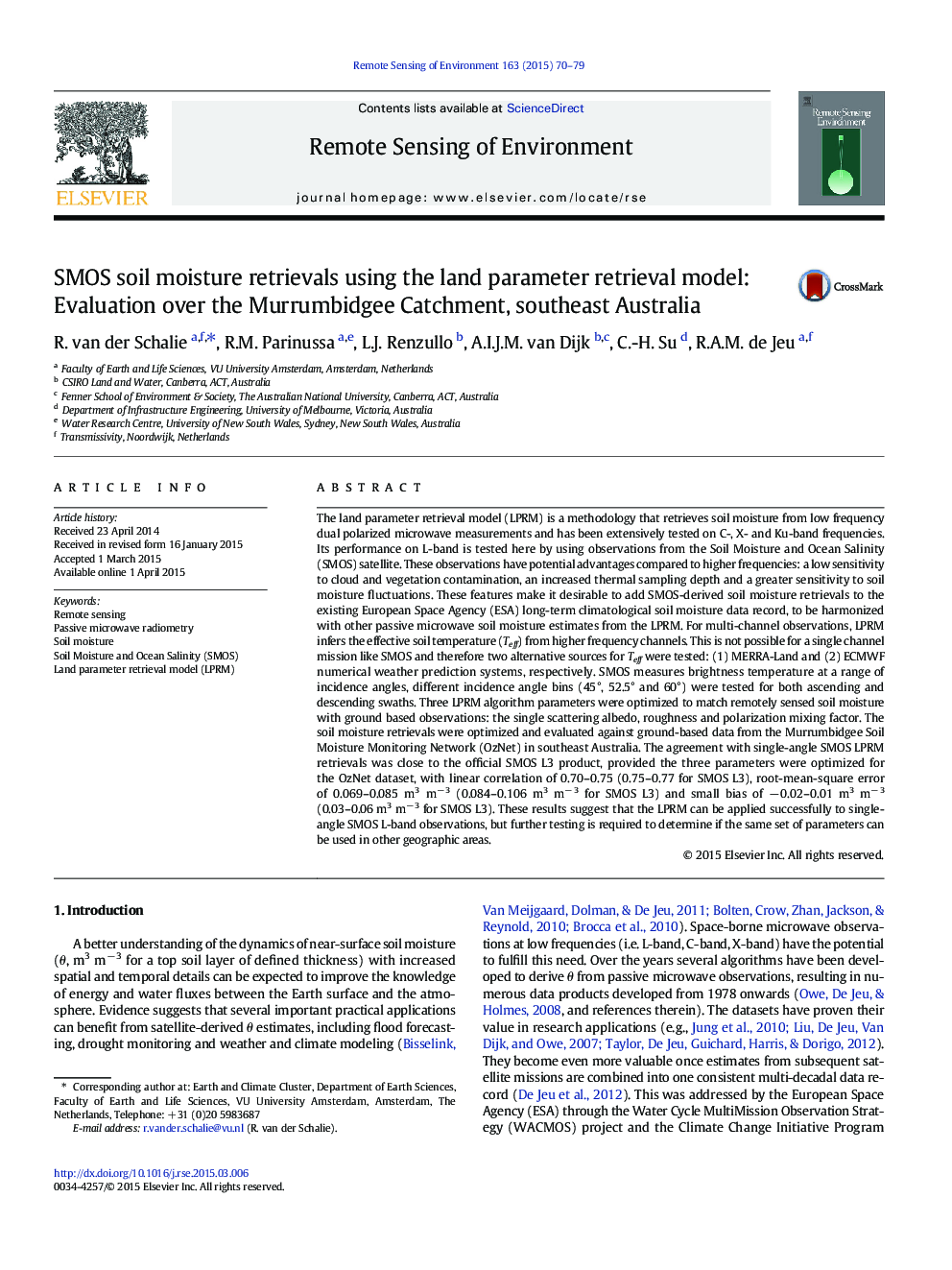| کد مقاله | کد نشریه | سال انتشار | مقاله انگلیسی | نسخه تمام متن |
|---|---|---|---|---|
| 6346097 | 1621237 | 2015 | 10 صفحه PDF | دانلود رایگان |

- Land parameter retrieval model is applied to low frequency microwave observations.
- 1.4Â GHz measurements from the Soil Moisture and Ocean Salinity mission were used.
- LPRM uses single instead of multiple incidence angle observations.
- The model results were evaluated with an in situ dataset of southeast Australia.
- The results fall close to the operational SMOS soil moisture retrievals.
The land parameter retrieval model (LPRM) is a methodology that retrieves soil moisture from low frequency dual polarized microwave measurements and has been extensively tested on C-, X- and Ku-band frequencies. Its performance on L-band is tested here by using observations from the Soil Moisture and Ocean Salinity (SMOS) satellite. These observations have potential advantages compared to higher frequencies: a low sensitivity to cloud and vegetation contamination, an increased thermal sampling depth and a greater sensitivity to soil moisture fluctuations. These features make it desirable to add SMOS-derived soil moisture retrievals to the existing European Space Agency (ESA) long-term climatological soil moisture data record, to be harmonized with other passive microwave soil moisture estimates from the LPRM. For multi-channel observations, LPRM infers the effective soil temperature (Teff) from higher frequency channels. This is not possible for a single channel mission like SMOS and therefore two alternative sources for Teff were tested: (1) MERRA-Land and (2) ECMWF numerical weather prediction systems, respectively. SMOS measures brightness temperature at a range of incidence angles, different incidence angle bins (45°, 52.5° and 60°) were tested for both ascending and descending swaths. Three LPRM algorithm parameters were optimized to match remotely sensed soil moisture with ground based observations: the single scattering albedo, roughness and polarization mixing factor. The soil moisture retrievals were optimized and evaluated against ground-based data from the Murrumbidgee Soil Moisture Monitoring Network (OzNet) in southeast Australia. The agreement with single-angle SMOS LPRM retrievals was close to the official SMOS L3 product, provided the three parameters were optimized for the OzNet dataset, with linear correlation of 0.70-0.75 (0.75-0.77 for SMOS L3), root-mean-square error of 0.069-0.085 m3 mâ 3 (0.084-0.106 m3 mâ 3 for SMOS L3) and small bias of â 0.02-0.01 m3 mâ 3 (0.03-0.06 m3 mâ 3 for SMOS L3). These results suggest that the LPRM can be applied successfully to single-angle SMOS L-band observations, but further testing is required to determine if the same set of parameters can be used in other geographic areas.
Journal: Remote Sensing of Environment - Volume 163, 15 June 2015, Pages 70-79